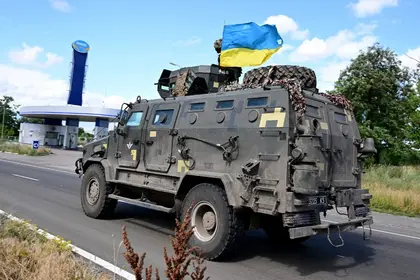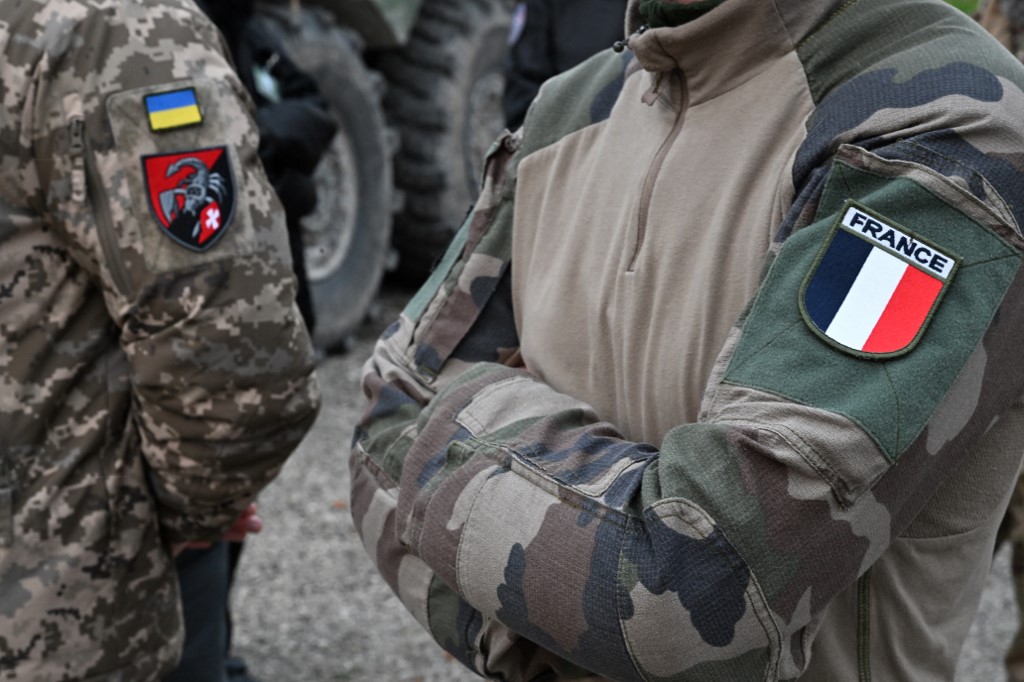On Feb. 24, Vladimir Putin and the Russian people unleashed full-scale, conventional war on the Ukrainians. Moscow’s objective was, basically, to wipe independent Ukraine off the map.
Most people in most places figured the Ukrainians would hold out a week or two at best. In capitals like Berlin and Paris and Madrid, the hope was Kyiv would “do the right thing” and capitulate, agree to the dismemberment of the Ukrainian state, accept a Russia-dictated peace, and restart nice, stable deliveries of cheap(ish) Russian natural gas to Europe.
JOIN US ON TELEGRAM
Follow our coverage of the war on the @Kyivpost_official.
Six months down the line, the Ukrainians are still in there, swinging.
After months of air strikes, smashed apartment buildings, gutted combat units, flattened cities, with one in ten Ukrainians now war refugees, the critical problem with Vladimir Putin’s grandiose plans is unchanged from day one: The Ukrainians are defiant, they insist on existing, and they will not lie down to a dictator.
The Moscow Tsar may (and probably does) see them as a mongrel people. The reality is, the Ukrainians will fight.
The Ukrainians themselves know, without hyperbole, they are fighting for their freedom; for their language, their homes; for the right to run an honest business the state can’t steal from you; for schools that teach your children fact-based history; to be able walk the streets and meet with whomever you want; to speak your mind as you wish, as a free citizen, without fear the police might arrest you.

Ukrainian Partisans Uncover Russian Military HQ in Crimean Resort, Highlighting Civilian Danger
It is essentially impossible, in present Ukraine, to find anyone who hasn’t somehow lost something – property, education, a relative, a career, a relationship – to the Russian invasion. No one says it would have been better just to surrender to the Russians.
The Ukrainians have not just fought a stronger opponent to a standstill, they’ve found ways to win. In the early days of the war, the Russians sent helicopters and transport jets loaded with paratroopers to airfields around Kyiv, to places like Hostomel’ and Vasylkiv, to grab the Ukrainian capital in a coup de main.
A hodgepodge of regular infantry, territorial defense battalions and recently-armed civilians built barricades and stood to Kyiv’s defense. Russian aircraft were shot down. Elite Russian airborne infantry learned the supposedly incompetent Ukrainian military was, it turned out, highly skilled at knocking out the first and last vehicles in a Russian road column, halting its progress, and then walking heavy artillery shells up and down its length.
The Russians sent massive reinforcements to outflank Kyiv from both sides. Some Ukrainian genius or geniuses realized that the roads north of the city run through low-lying terrain kept dry by dams and canals, opened sluices, and flooded hundreds of square kilometers. Epic Russian traffic jams piled up, one stretching 20 kilometers. The Ukrainians shot up some of the columns, drove others off, and even more Russian vehicles were abandoned out of fuel.
This was when the world met the meme of the Ukrainian tractor towing the dead Russian tank. To this day, the country that has donated the most combat vehicles to the Ukrainian army is the Russian army. This also was when the world learned about the Bayraktar strike drone, and that Ukrainians were using the aircraft like flexible reserve to pick apart advancing columns.
In the east, hard-fighting Ukrainian formations like the 92nd Mechanized Brigade halted and defeated the regular Russian army in open battle. The Russian plan called for the northern cities Kharkiv and Chernhiv to come under Kremlin control at the latest by the third day of the war. Both held out for more than a month.
The Russians gave up on capturing Kyiv and Kharkiv and retreated. Soon after that, the Ukrainians learned about hundreds of civilian men, women and children executed by Russian soldiers in places like Bucha and Borodyanka.
The next big Russian push came in early May. A Russian general named Dvornikov figured on throwing bridges across the Siverskyi Donets River as a way to capture the city Severodonetsk. This was when foreign arms assistance – particularly from America, Canada, Britain, Australia, the Baltic states, the Czech Republic, Slovakia, and Poland – was first felt in a big way. Repeatedly the Russians attempted to ford the river, and each time they came out into the open, NATO-standard 155mm howitzer shells, fired by from NATO-standard howitzers, crucified the Kremlin formations.
Six months into the war, Russia is unable or unwilling to attempt a big ground attack – period. Its only tactic for advancing, following the May battles, is lining up long-range artillery and flattening towns and cities held by the Ukrainians. It took the Russians four months to demolish Mariupol, a city of half a million. The defenders – mostly elements of 36 Marine Brigade and the Azov National Guard Regiment – were surviving on a cup of oatmeal a day by the end of the siege.
The Ukrainians were blasted out of Severodonetsk, sometimes losing 500 men a day. The International Legion – citizens of other countries who came to Ukraine to volunteer to fight the Russians – took heavy losses in house-to-house fighting. Casualties were worse for the Russians. General Dvornikov was sacked in June.
July saw the delivery of long-range, precision-guided rocket artillery called HIMARS to the Ukrainians, and soon two to six Russian ammunition dumps were blowing up daily. For the first time in the war, it seems, the Ukrainians have a weapon that the Russians can’t counter. The massive Russian bombardments collapsed. The Dnipro-riverside city of Kherson, occupied by the Russians since the first days of the war, is now cut off because HIMARS rockets have demolished the three Dnipro River bridges connecting Kherson to other Russia-occupied territory. Ukrainian partisans are tacking up posters throughout the city saying: “The UAF is coming”.
Over the last six months Kyiv Post reporters embedded with combat units have asked soldiers the question: “What must Ukraine do to win this war?”.
The answer from those front-line soldiers – officers, NCOS, privates, regular army, special forces, territorial defense – has been for practical purposes unanimous. Paraphrased it goes roughly like this: “We will keep fighting until the Russians leave our country. For as long as it takes.”
You can also highlight the text and press Ctrl + Enter






